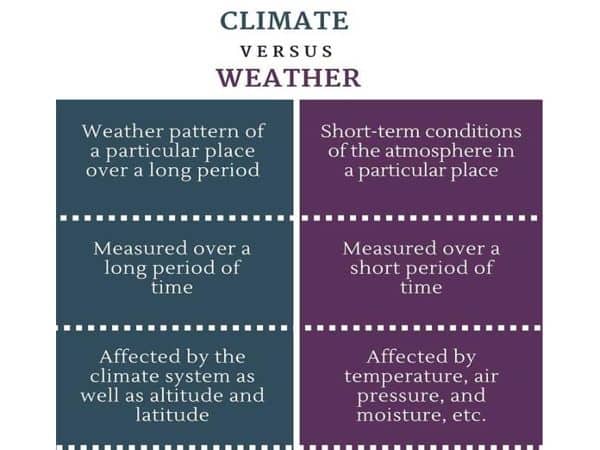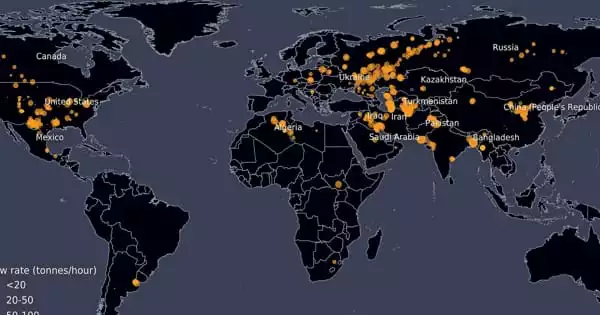The difference between weather and climate is a measure of time. Weather plays a significant role in our lives, as most of our day to day activities are planned according to the forecasting made by the meteorological department for a particular day. It is basically the way the atmosphere is behaving, mainly with respect to its effects upon life and human activities. On the contrary, climate indicates the weather pattern of a particular place, taken over a long time. It is how the atmosphere “behaves” over relatively long periods of time.
Weather reflects short-term conditions of the atmosphere while climate is the average daily weather for an extended period of time at a certain location.
Weather is the moment-wise state of the atmosphere of a geographical area. As against this, the climate is the average weather in a given region.
Difference between Weather and Climate

WEATHER
- Weather is everyday atmospheric condition of a particular region, as regards temperature, humidity, wind speed, etc.
- Most weather happens in the part of Earth’s atmosphere that is closest to the ground—called the troposphere. And, there are many different factors that can change the atmosphere in a certain area like air pressure, temperature, humidity, wind speed and direction, and lots of other things.
- Weather is the routine atmospheric condition of a specific region, as regards temperature, humidity, wind speed, etc.
- Simply put, whether denotes the daily atmospheric condition, concerning various elements like temperature, precipitation, moisture, cloudiness, wind velocity, and air pressure.
- The weather of a place can change in few hours or even in few minutes, i.e. it changes frequently.
- It expresses the position of the atmosphere at a specified place and time, in degrees, i.e. hot or cold, clear or cloudy, dry or wet.
- Weather is greatly affected by factors like temperature, humidity, air pressure, cloudiness, precipitation, etc.
- It constantly changes, i.e. hour after hour and day after day. Weather forecasting is a difficult task, as many times, it happens that on a sunny day, suddenly heavy rains occur or the sunshine occurs immediately after heavy rains.
CLIMATE
- Climate alludes to the standard pattern of the weather of a particular place, taken over more than 25 years.
- When scientists talk about climate, they’re often looking at averages of precipitation, temperature, humidity, sunshine, wind, and other measures of weather that occur over a long period in a particular place.
- Climate implies the standard pattern of the weather of a particular place, taken over a period.
- The term ‘climate’, is used to mean weather trends in a specific region, over the course of many years.
- The climate of a place takes several years to change, and thus it does not change frequently.
- It is the statistical information of weather that signifies that common atmospheric pattern, in an area over decades, i.e. it does not indicate the weather changes occurring daily or weekly.
- Temperature and precipitation are the two key factors that influence climate.
- The climate of a place is greatly affected by two factors, which are temperature and precipitation, and other factors influencing it includes wind velocity, the sunshine, precipitation timing, humidity and so on.
Information Source:
















